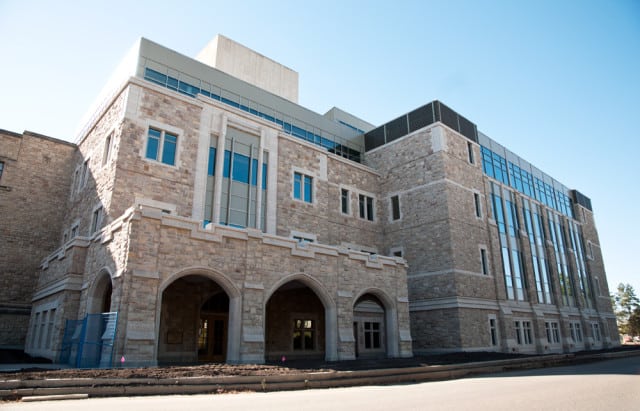
Accreditors are back on campus to check in on the struggling U of S medical school, which is currently without a permanent dean and in the midst of a massive restructuring.
Two years after warning the College of Medicine that it would risk losing accreditation if it did not restructure its operations, a small team of inspectors has returned to the University of Saskatchewan to examine the changes the medical school has made so far.
The team, from the committee responsible for standardizing and accrediting major medical programs across North America, was on campus March 12 and 13 to meet with the acting dean of the college, faculty and students to assess how the school is resolving 10 areas of underperformance accreditors red-flagged in March 2011. At the time, the school was told it had 12 to 15 months to begin fixing the issues.
If the committee decides enough progress has been made, the warning could be lifted from the college. On the other hand, if the committee is not satisfied with the situation, either the warning will continue or full-on probation will be imposed. In rare circumstances, accreditation could be denied or withdrawn.
At the earliest, the results of the visit will be announced this summer.
“Students have been actively voicing concerns, working with the college on the improvement of the 10 standards of issue,” the Student Medical Society of Saskatchewan wrote in a press release March 11.
The 10 infractions cited include an overall lack of structure, unclear professor responsibilities, decentralized student reviews, a delay in reporting students’ final marks, informal student review procedures and insufficient study space at the campus in Regina.
After more than a year of back-and-forth deliberations between college faculty and university administrators, both sides agreed to a sweeping restructuring plan in January. The new structure will split the college into three departments — research, education and faculty engagement — each with its own vice-dean.
Since receiving the green light to restructure, the college has formed ad-hoc groups and worked closely with the university to develop an action plan.
But some, including U of S President Ilene Busch-Vishniac, have doubts that enough progress has been made.
Busch-Vishniac, who’s publicly declared the medical school her number one priority, told the StarPhoenix last month she is unsure the college can avoid probation.
“There is a good probability that we will encounter resistance from accreditors,” Busch-Vishniac said.
If probation is issued, “it means we take a hit,” she said. “Nobody wants to be on probation. It means we are found lacking.”
In addition to solving accreditation issues, the restructuring plan also aims to boost faculty research outputs and students written test scores, both of which fail in comparison to peer undergraduate medical programs in Canada, known as the U-15 — Canada’s now 17 leading medical-doctoral research universities.
On average, medical schools countrywide account for about 50 per of all research done at universities. In comparison, the U of S medical school only accounts for about 10 per cent of all research on campus.
The reason, Busch-Vishniac said in an editorial interview with the Sheaf, is that there are about 250 college faculty members and roughly 100 of them are not doing any research or teaching. Instead they are focused solely on clinical practice.
Without medical schools as part of the equation, the U of S ranks around “the middle of the pack” in total research revenue compared to other U-15 universities, Busch-Vishniac says. With medicine, the U of S plummets to dead last.
“Before we can resolve our issues in the College of Medicine we really have to partner well with the health regions so we can present a solution to government that is a win-win for everyone that is involved,” the president said.
The college’s issues have had a direct impact on students, who rank last in the country in written test scores. To combat the poor performance, the college has recently proposed more stringent requirements for acceptance into the undergraduate program.
“Our priority must be the training of medical professionals and research and discovery so that we open new doors in medicine,” Busch-Vishniac said.
—
Photo: Raisa Pezderic/The Sheaf